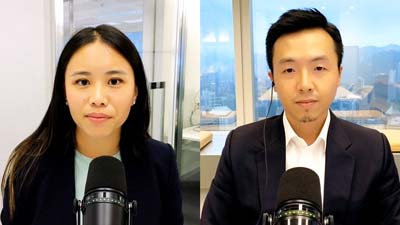
In the third quarter of 2022, mandatory Provident Fund (MPF) holders in Hong Kong experienced a quarter that was nearly as tough as the one in which the coronavirus pandemic began. Q32022 also marks the sixth-largest quarterly loss in the MPF's history.
The factors that drove markets down were eerily similar to the Q3 of 2011 – that’s right, 11 years ago – which was when the scheme saw its largest declines. In Q32011, global markets were overshadowed by uncertainties over the US Federal Reserve’s first rate hike in nearly a decade, even as the Chinese equity markets fell. That quarter, MPF funds lost 12.7% on average for the third quarter. 11 years later, that loss is a little under 9.5%.
How Does This Quarter Compare to the Past Crises?
In 2022, however, what’s worse than 2011 is that no categories could avoid a loss. For the first time, even bond and money-market categories ended the quarter in the red. For example, in the most recent correction, as the COVID outbreak brought the MPF scheme down 10.8% in the first quarter of 2020, HKD bond and money market funds worked out well as a defensive choice. Plus, the correction was quickly followed by a rebound that lasted five quarters.
More than 470 products in the scheme lost 9.4% on average for the quarter. Recession fears as central banks ramp up interest rates to tame runaway inflation continue to dampen the already-sour sentiment.
The loss for the past nine months was the biggest of its kind. The average year-to-date loss widened to 20.7%, which makes it the worst January-September period in MPF’s 22-year history. The deepest consecutive slump, though, dated back to the global financial crisis in 2008. MPF workers experienced five consecutive quarters of negative returns, or 31.6% over 15 months.
Returns Are Dragged by Underperforming Chinese Markets
Hong Kong and China markets, which suffer an additional set of unique risk factors, also retreated alongside the global markets. Bearish views on China’s COVID policy, recessionary fears, and yuan weakness against the greenback all weighed on the region’s poor performance.
The Hang Seng Index slumped 21% in the third quarter, the worst quarter since 2011. Mega-cap Alibaba Group (09988), Tencent Holdings (00700), and HSBC (00005) all contributed as top losers.
Hong Kong equity and China & greater China equity MPFs lost 21%, in line with the key benchmark. Both categories are the quarterly and year-to-date poor performers. Hong Kong equity MPFs, managed by Schroder, Sun Life, Invesco, AMTD, Manulife, and BCT, took the bottom 10, each returning minus 22-24% for the third quarter while ended the nine months with approximately 30% loss.
Other Asia-focused funds, Asia ex-Japan equity and Asia-Pacific ex-Japan equity MPFs registered a loss of more than 10% for the quarter. Aggressive allocation funds also slid 10% for the Q3.
Best Performers Are In the Red, Too
Even as money-market funds, products that are closest to cash in the scheme, were also down. In the third quarter, HKD-denominated money market funds came in as the top-performing category, down 0.03%.
Other relatively conservative options like HKD bond portfolios slid 2.9% and guaranteed funds dipped slightly more than 3%. Year to date, these funds still provide safety to pension contributors. But, as the bond market plummeted in concert with stocks, HKD bond and guaranteed fund categories post a loss of close to 10%.
Top performers include a money-market portfolio, BCOM MPF Conservative Fund, and three other guaranteed funds managed by Principal. The rest of the list is completed by other similar funds.












.png)



.jpg)





